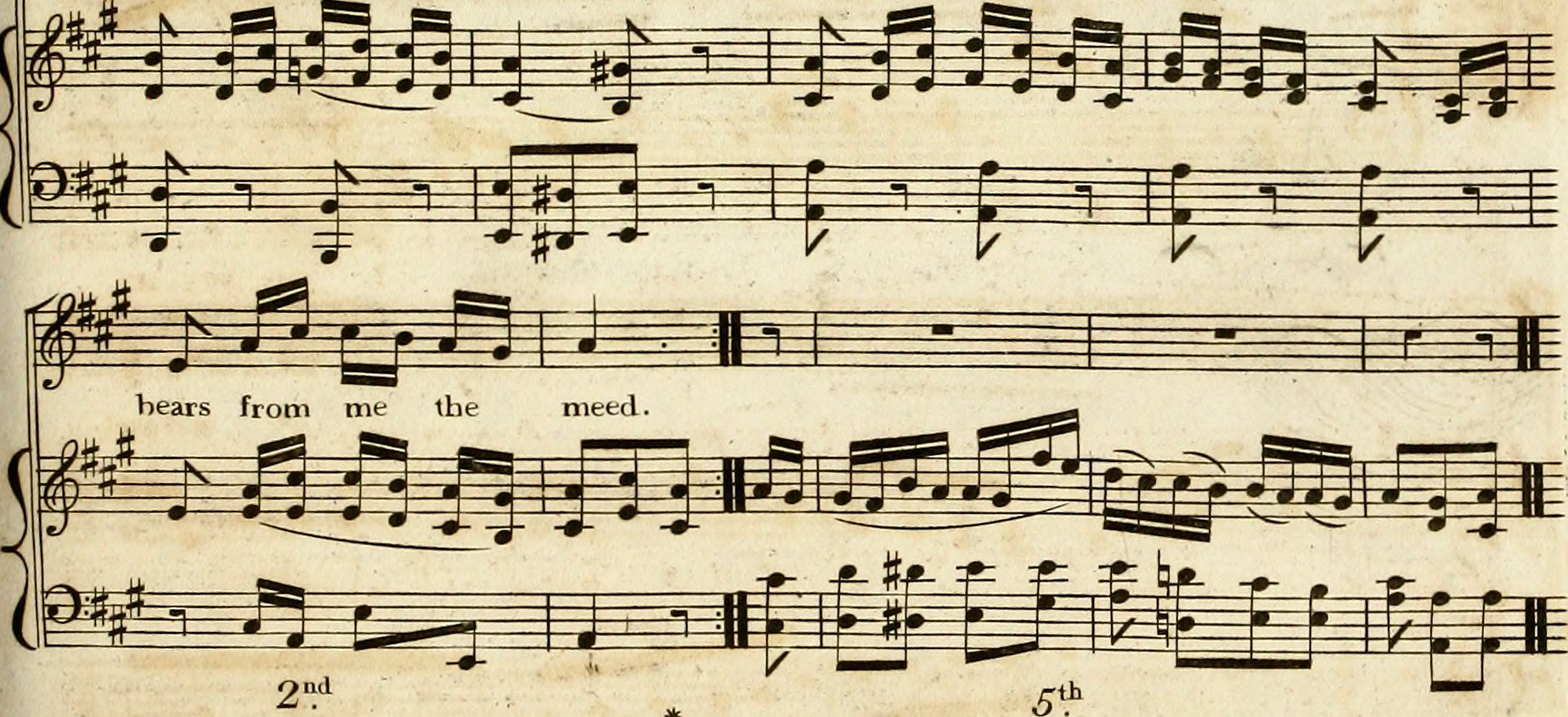When we talk about textures in music we are essentially dealing with how the sound is organized. And while it is not a difficult concept there are a lot of parts involved to get the final and overall sound quality.
For instance, when a piece has many instruments or parts it is said to have a thick texture, but there are more than just musical parts that affect it. The range of notes, articulation, rhythm, harmony, and other aspects will change the final musical texture of the composition.
What Creates the Texture in Music?
Tempo
Here is a great example of the frustration of music theory; tempo usually just means the speed of a piece. Other times that meaning can also include the meter and how you articulate or play your notes! And all these pieces of tempo may or may not change the final texture.
The song “Piano Man” is in 3/4 time which helps its jazzy lounge music vibe. However, the final texture of this piece is still similar to other soft rock hits of the era. But the “Blue Danube Waltz” is also in 3/4 time (and nearly the same BPM) and it has a totally different texture. The articulation in the waltz tempo here makes a bigger difference.
You will have to analyze the piece of music you are playing to judge which aspects of tempo have the most effect on the final piece. Especially with all the use of modern syncopation, you will usually see rhythm involved.
Rhythm
Along with harmonic changes, textures are also heavily influenced by changes in rhythm and meters. Sometimes multiple instruments and voices are singing different parts to the same underlying theme. Or you may have all the parts playing the same rhythms within their notes.
Remember the rhythm is more about where the notes are placed and their patterns, as opposed to the tempo above. Often it is the rhythm that will let us know what genre or style of music we are in, based upon repeated parts of the drum and bass sections.
Melody
Our melody is the main line of notes that runs through our song. With melody, you are only moving in a linear fashion, left to right across the sheet music. Any notes that are vertical make up our harmony.
The melodic aspect is generally the most important part of the song, this is the part you sing! The rhythm and pitch of the notes create specific phrases that stand out. In some cases at the very front of the composition, other times it can be in the background.
But even though melodies are supposed to be unique, there are only so many intervals. A keen ear can find many similarities in songs once they are familiar with these changes.
Harmony
As mentioned once we start adding vertical notes to the horizontal melody we get into our harmony. This is what makes up our chords and the progressions that create our songs. Adding notes to our melody helps us create more tension in our music.
As you start learning chord progressions you will see people use the same ones over and over all the time. This is normal practice, but it is essential to use a unique melody line. However, as you recognize more progressions you will see they too can contribute to the final musical texture.
Harmonies can get pretty complex, especially when we get into overtones that begin to layer and mix. And notes will be dissonant or consonant based upon the context they are in. Of course because music theory just can’t make up its mind!
Timbre
Timbre is the feeling you get when you hear two sounds that have the same loudness and pitch, but you can tell they are different. If you play a note on the piano and sing it at the same time, the tone quality of each will be discernible. Even with closer sounding instruments like a clarinet and soprano saxophone, the timbre is not the same.
The tones of various instruments in a song or composition will contribute to the density and the overall texture of the music. And don’t forget that each individual instrument and voice can all be played in various ways to further add to the final change and feel in the music.
Types of Texture
And that is the ultimate point to texture, it all depends on a variety of factors that may be the same but act differently. A syncopated tempo or dissonant note in a classical piece may be off and ruin the overall tone. Put that in a rock situation and you have the proper texture for that genre.
However, despite the ambiguity, there are some common types of texture that you will come across. If you have learned your basic Greek and Latin prefixes the following terms should be pretty straightforward.
Monophonic
This is music with only one melody line and nothing more. If you are singing by yourself or with others all in the same melody, it is monophonic. Any supporting voices for the main melody will always be double or parallel. A great example is the military bugle call “Taps.”
Most folk, traditional, and kids' songs are monophonic as are the earliest Gregorian chants. Monophony does not always have underlying rhythmic changes and it is the simplest texture in music there is.
Biphonic
These are of course two distinct lines in the piece, one the melody and the other a drone being played. Once we get away from the droning aspect it becomes more of a homophonic piece explained below. When it is a pitch that has a drone quality it is more static support than another melody.
A great vocal example of this is Tuvan throat singing. Where people sing a pitch and its overtone at the same time! Go ahead see if you can do two pitches at once!
Polyphonic
This is where we find the terms counterpoint or contrapuntal, which means while one melody line is going we have another line added. These added melody lines are harmonically different so that our final texture is a note against a note.
A good way to describe polyphonic texture is like mixing two separate songs that happen to actually fit! A classic and famous counterpoint composition is of course “Prelude and Fugue n.23 in B Major.” One modern example of polyphony is the song “Good Vibrations'' in the refrain as they sing over that weird sounding electro-theremin.
Homophonic
Most modern pieces are homophonic, meaning one melody line but with accompaniment. These are songs with chord progressions and a discernible melody, most modern music falls into this category. Ragtime, jazz, blues, rock, pop, and the like all mostly homophonic.
This style started in the classical period and is still big today. Occasionally modern homophonic songs will pull from other textures to mix a little in like The Beach Boys above. These common textures have both harmonic and rhythmic support making it possible to have a wide range of possibilities.
Heterophonic
This texture is seen more often in nonwestern styles of music. It’s basically having variations of the same melody playing at once. Great examples are gamelans, classical Arabic, and Thai music.
However, it does pop up in western pieces on occasion like with Mozart (around the 4:30 mark). Usually, the heterophonic style doesn’t mix well with modern instruments so it’s not an easy texture to adapt. It is simply best suited to certain instruments and vocal traditions.
These terms are great for understanding basic concepts of texture, but they don’t tell the whole story. We can have melody and accompaniment, broken chords, arpeggiated chords, and songs that are a mix of the musical textures above.
Despite the large amount of variation in texture, it is usually not complicated. All it takes is really listening to a song to pick out the major points. Here is a piece where all three major textures in western music are present, can you pick out each one?
Modern Tech and Texture
Recent technology has had an incredible effect on musical texture, so many different ways to alter the sound of your note. And with instruments like the aerophone, you can copy multiple timbres with added sound sculpting ability.
Classical music is often a mix of the main three textures; monophony, polyphony, and homophony. But over time our music has really become centered around the last one alone. It is thanks to the changes and quantities in the instruments we play.
One reason chordophones like guitars and ukuleles are so popular is the ability to take care of much of the musical texture yourself. When you play in an orchestra or band you only have a single note part in the melody or harmony. Not to mention you cannot sing a melody while playing most orchestra instruments!
That’s one reason modern DAW’s (Digital Audio Workstations) and recording abilities are so amazing. You alone can create all these textures by yourself with a home recording setup. Whether you are playing covers of classical pieces, modern hits, or working on your own composition.
Simply put it is an amazing time to be living as far as textures in music go. We have access to past and present examples from across the world and a bright future for creating new music with incredible sound qualities!




